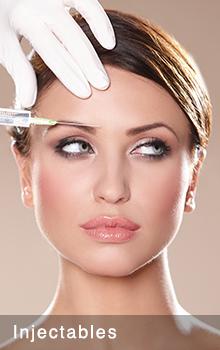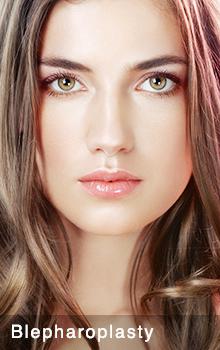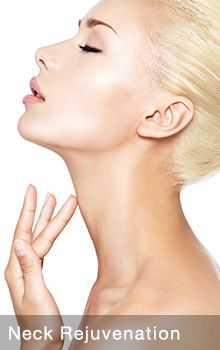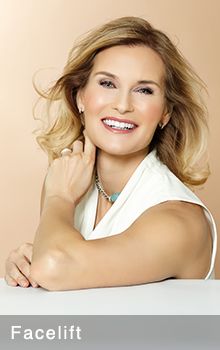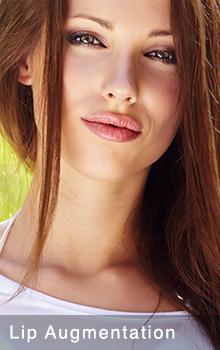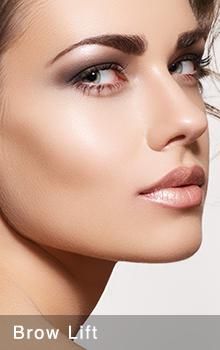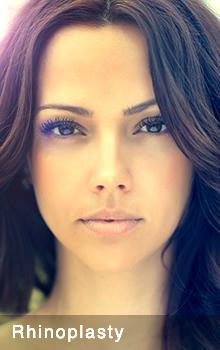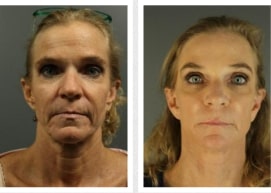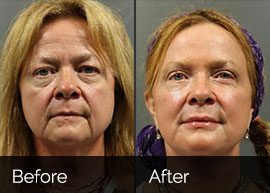Blepharoplasty (Eyelid Surgery) in Austin, TX
Want To See Real Blepharoplasty Results?
Before & After Gallery
Be sure to view our blepharoplasty gallery to see real patient results.
Click HereDid you know? The emergence of crow’s feet is usually the first sign of aging in women, signaling that the aging process has started!
The eyes show age more than any other part of our body, partly due to sun damage, squinting, smiling and genetics, but also because the skin of the eyelids is so thin and delicate. If your eyes are conveying a tired, sad or angry appearance and not your real emotion, read on to find the solution that’s right for you.
Eyelid Aesthetics
In order to fully understand the aging process around the eyes, we think it’s helpful to look at young IDEAL eyelids and compare them with aged eyelids. Of course, ethnicity, sex, and genetics must be considered. If you are a man reading this, we have a section on male eyelid surgery just for you.
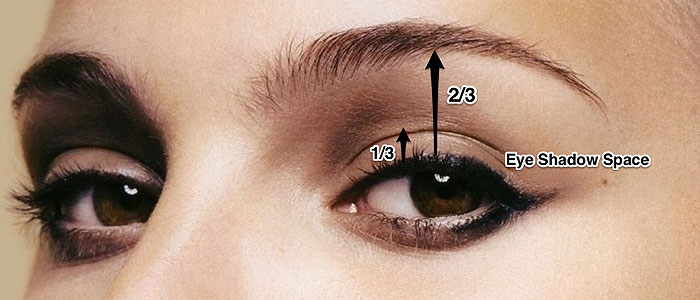
These eyes represent the ideal proportion of “eye shadow space”. The “eye shadow space” is the portion of the upper eyelid that’s visible from the lash line to the crease, and it should be 1/3, and at most, 1/2 of the entire distance from the lash line to lower border of the eyebrow. The lid skin under the brow is full with no excess skin.
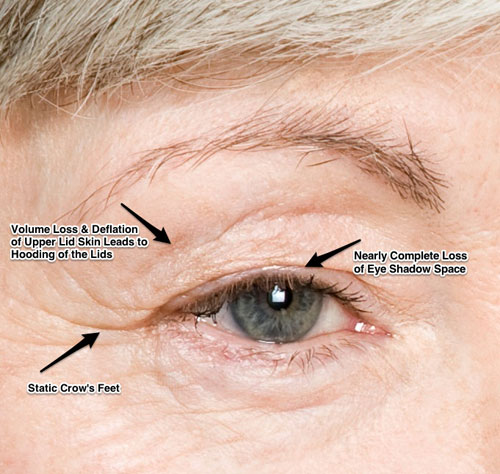
Compare the young eyelid with this aged eyelid. The aged eyelid has lost all “eye shadow space” and demonstrates deflation of the tissues, excess skin, hooding of the upper eyelid and static wrinkles or crow’s feet.
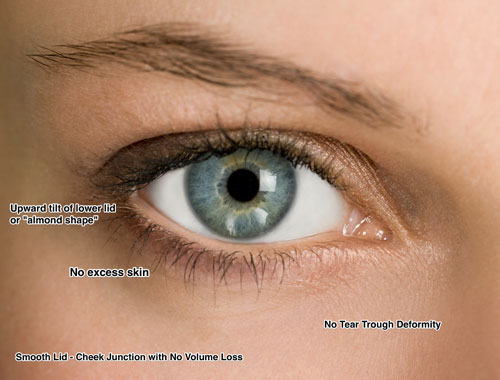
This lower eyelid has the perfect shape with a slightly upward tilt of the lower lid as it approaches the corner. There’s an absence of crow’s feet, a tear trough, or deflation in the tissues. The lid – cheek junction is smooth and undetectable.
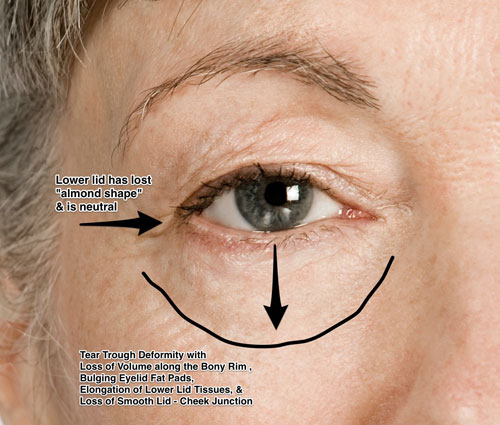
This aged lower lid has lost its almond shape. She has many static fine lines and loss of volume, leading to a hollowed appearance along the bony rim with a prominent tear trough. The tear trough accentuates the bulging fat pads above it. When the lower lid tissues deflate, gravity pulls the skin down, and you can see the significant elongation of the lower lid skin compared with the younger eyelid. This elongation and tear trough cause the loss of the smooth lid-cheek junction of youth.
Many patients come into our office complaining of excess upper eyelid skin or hooding of the upper lids. It’s important to understand that the brow and the upper eyelid are intimately related. The brow supports the upper lid skin, much like a curtain rod supports curtains. The brow and upper lids age at the same rate, except for the tail of the brow which typically ages faster. This leads to a loss of the arch with rounding of the brow causing heaviness and hooding of the upper lid skin and a tired appearance. Many times, a brow lift, is needed in addition to an upper eyelid blepharoplasty.
Now that you’re an expert on eyelid aging, let’s talk about your specific concerns. We’ve listed the more common concerns our patients have when it comes to their eyelids and surrounding eye tissue. Dr. Reid and Dr. Gordon offer a myriad of solutions to refresh and rejuvenate your delicate eye area, from prevention to quick fixes to surgical solutions. A natural appearance that communicates how you feel; vibrant, youthful, and rested, is their objective.

Want To See Real Blepharoplasty Results?
Take a look at our Blepharoplasty before & after photo gallery to see real patient results. For more information or to schedule your personal consultation for eyelid surgery in Austin, TX, please call 512-371-8817 or contact us online today.
Your Concern:
Crepey Lower Eyelid Skin or “Sad Eyes”
- Loss of elasticity and volume in the delicate skin of lower lid.
- Sagging of the lower lid tendon the at the outer corner of the eye causes the eye to lose its almond shape.
- Sunscreen
- Topical skin care products with a retinoid and Vitamin C to build collagen and an eye cream to restore elasticity to the skin.
- Fillers and laser treatments to maintain volume and stimulate collagen.
Under-Eye Hollows, Dark Circles and a Tear Trough
Cause:
As the skin in the lower lid loses elasticity and thins, it elongates and the smooth transition between skin of the lower lid and the skin of the cheek is lost. The lid/cheek junction becomes very distinct and the tear trough forms. The veins are more visible through the thin skin leading to the appearance of dark circles. Loss of fat above the bony orbit also occurs creating a hollowed look.
Injectable Solution:
Fillers such as Belotero, Radiesse, Restylane, Voluma, and Sculptra or fat grafting to correct the depressions under the eyes and the tear trough. These will also minimize dark shadowing by creating a buffer between the thin eyelid skin and the underlying darker facial vessels.
Laser Solution:
Forever Young BBL and HALO Laser treatments to keep skin young and healthy and help get rid of pigment.
Surgical Solution:
Lower blepharoplasty with re-draping of the fat and release of the tear trough to create a smooth contour between the lid and the cheek. Excess skin is also removed.
Product Solution:
Products can help to lighten the area if the darkness if related to melanin and increased pigment in the skin. Sunblock is key.
Prevention:
- Unfortunately, most of the changes in the lower lid are hereditary, so you should be very proactive with sunscreen & our recommended skin care regimen.
- Topical skin care products with a retinoid and Vitamin C to build collagen and an eye cream to restore elasticity to the skin.
- Fillers and laser treatments to maintain volume and stimulate collagen
Under-Eye Bags
Cause:
Weakening of the layer that covers the fat in the lower lid allows the fat to bulge, or herniate, towards the surface. The fat is not the problem, but rather a symptom. The anatomical problem causing the symptom is that the fat is no longer in its proper location. It bulges towards the surface of the skin and gives the illusion of excess. Very rarely, a true excess of fat is present, and it’s typically seen in younger patients and is related to genetics.
Injectable Solution:
Fillers such as Belotero, Radiesse, Restylane, Voluma, and Sculptra or fat grafting to build up lost volume and camouflage the bulging fat pad.
Laser Solution:
Fractional or Ablative Laser Resurfacing will stimulate collagen production can tighten the excess skin.
Surgical Solution:
Lower lid eye lift, or lower blepharoplasty, with re-draping of the fat to create a smooth contour between the lid and the cheek. Fat removal is done in rare cases where there is true excess.
Product Solution:
Products with a retinoid and Vitamin C to build collagen and an eye cream for elasticity.
Prevention:
Unfortunately, most of the changes in the lower lid are hereditary, so you should be very proactive with sunscreen and our recommended skin care regimen.
Hooded or Saggy Upper Lids
Cause:
Loss of elasticity in the delicate skin of upper lid causes it to stretch and sag. Loss of fat in the upper lid and brow leads to deflation. Aging of the brow causes the brow to drop, which in turn, causes hooding of the upper lid skin. Eventually, the eyes start to slant downward at the outer corners, leading to a sad look.
Injectable Solution:
If skin excess is minimal, a combination of Botox and Fillers such as Belotero and Restylane can be used to plump the upper lid and brow.
Laser Solution:
Fractional or Ablative Laser Resurfacing will stimulate collagen production can help tighten the excess skin if it is minimal.
Surgical Solution:
If skin excess is significant, an upper eyelid lift, also known as an upper blepharoplasty, is recommended. Excess skin is removed and a crisp upper lid crease is re-created giving a bright, open-looking eye.
Product Solution:
Eye cream to restore elasticity to the skin.
Prevention:
- Sunscreen
- Topical skin care products with a retinoid and Vitamin C to build collagen and an eye cream to restore elasticity to the skin.
Vertical Lines Between My Eyebrows, The 11’s That Make Me Look Angry
Cause:
Frowning, squinting and sun exposure.
Injectable Solution:
- Botox, Dysport or Xeomin to weaken the muscle contractions that lead to these fine lines.
- HA fillers like Belotero or Restylane to fill the lines if they are deeply etched in the skin.
Laser Solution:
Fractional or Ablative Laser Resurfacing will reduce the appearance of severe lines and wrinkles by removing the top layer of the skin and stimulating collagen production.
Surgical Solution:
If the muscle is truly hyperactive, some of the muscle fibers can be removed during a brow lift or upper blepharoplasty.
Product Solution:
Products with a retinoid and Vitamin C to build collagen and minimize wrinkles.
Prevention:
- Sunglasses to prevent squinting
- Sunblock
- Topical skin care products as prevention rather than correction
- Botox, Dysport or Xeomin as prevention in never allowing the lines to form
Crow’s Feet, Those Tiny Lines That Extend Out From The Corners Of My Eyes
Cause:
Squinting and smiling causes the muscles around the eye to make tiny contractions, eventually etching fine lines into the skin. Sun exposure encourages crow’s feet because it breaks down collagen and elastin, weakening the skin.
Injectable Solution:
Botox, Dysport or Xeomin to weaken the muscle contractions that lead to these fine lines
Laser Solution:
Fractional or Ablative Laser Resurfacing will reduce the appearance of severe lines and wrinkles by removing the top layer of the skin and stimulating collagen production.
Surgical Solution:
None
Product Solution:
Products with a retinoid and Vitamin C to build collagen and an eye cream to restore elasticity to the skin.
Prevention:
- Sunglasses with an extra-wide frame that wraps around the sides of your face. Think Jackie-0.
- Sunblock
- Topical skin care products as prevention rather than correction
- Botox, Dysport or Xeomin as prevention in never allowing the lines to form
- Forever Young BBL treatments to keep skin young and healthy
Key Differences Between Restora Austin Eyelid Lifts vs. Traditional Eyelid Lifts
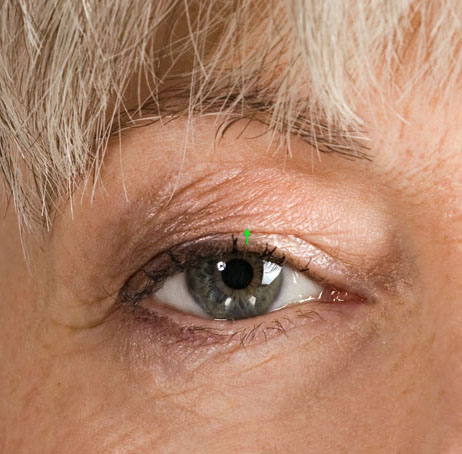
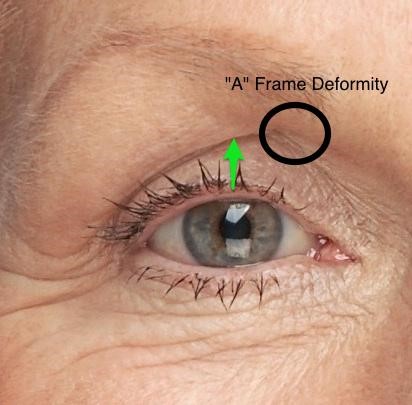
Dr. Reid and Dr. Gordon had extensive training in eyelid surgery during their training at Emory University and Paces Plastic Surgery. They trained with oculoplastic luminaries like Dr. Clinton McCord and Dr. Mark Codner. Dr. Gordon completed an additional fellowship in aesthetic and oculoplastic surgery. Both are obsessed with natural-looking results. In order to achieve the most natural-looking results, one must study what makes a young eyelid attractive and how to best reverse the signs of aging. Aging, especially in the eyelids, is a very complex process and each individual patient must be studied to determine which procedure is best. Your surgeon will study pictures of you decades earlier in order to preserve your individuality. Traditional upper lid blepharoplasty focused on removing all of the extra skin, raising the crease to 10 mm or more above the lash line to create excessive eye shadow space. Dr. Reid and Dr. Gordon don’t subscribe to this “cookbook” approach to surgery. The two patients in these images have extremes of crease placement (green arrows), yet both of their eyelids look old and unattractive. The woman on the left has nearly complete loss of her eye shadow space and her crease is ill-defined. The woman on the right has a crease that’s too high, and she also has an “A” frame deformity, which results from removing too much fat during upper blepharoplasty.
In the upper lids, it’s not just about the crease and removal of excess skin, it’s about SHAPE and volume. The common symptom in both of these women is DEFLATION. The woman on the right has a loss of volume from excessive surgical excision, which has left her skin tethered or scarred up to her orbital bone. The woman on the left has more superficial fat loss leading to complete deflation of her upper lid causing her eyelid skin to become very crepey and almost touch her eyelashes.

Look at the images of this famous actress. The image on the right is after what Dr. Reid and Dr. Gordon refer to as “cookbook” plastic surgery; doing the same operation on everyone with complete disregard for balance and proportion. Her surgeon failed to recapture the way she looked in her youth; low lid crease and full upper lids. This actress actually looks older after surgery and very unnatural. She has a “surprise” expression because her brows have been lifted too high. They are almost twice as high as they were in her 20’s. Her eyelid crease has also been placed too high, and she has almost twice as much eye shadow space. So, her brows are higher and she has more eye shadow space, so why does she look older? The answer is DEFLATION. Look at her image on the left and the one in the center and notice that her brows are not “up”, but appear to be “out”. They have projection because they are volumized. On the right, her brows are high, but they are flat and almost stuck onto her forehead. Notice how her entire face appears longer.
Non-Surgical Options for Eyelid Rejuvenation
- Chemical brow lift
- Two muscles are involved in elevating and lowering the brow. Strategically placed Botox or Xeomin injections into the muscle that pulls the brow down can give your brows a subtle yet temporary lift. How? The muscle that elevates the brow is not injected, so its action is unopposed and can lift the brow.
- Fractional & Ablative Laser Treatments are commonly used to address textural changes, like wrinkles, around the eye. Both stimulate the body to make new, better collagen, so lines are more sparse and the skin is tighter,
- BBL Treatments
- Dermal fillers can really rejuvenate the upper and lower eyelids by restoring lost volume and camouflaging hollows and darkness.
- Sparse lashes
- Long full, dark eyelashes are a sign of youth. Latisse can stimulate eyelash growth and camouflage the signs of aging.
- Eye cream
We offer several eye creams that help to correct the three most common eye concerns- dark circles, puffiness, and crepiness- at three different levels. On the skin’s surface, the creams use optical diffusers that reflect light. Under the skin, inflammation is reduced and deep within the skin anti-glycation ingredients restore water content and strengthen collagen and elastin.
Blepharoplasty in Austin, TX – Q&A
Is blepharoplasty usually combined with other procedures?
Most commonly, the brows are treated at the same time as the lids because the most common reason for droopy upper eyelids are droopy brows. If your brow is low, an upper blepharoplasty alone with removal of only eyelid skin can actually pull the brow down and worsen brow ptosis or droopiness of the brow. Go to our section on brow lift to learn more about brow aesthetics and treatment options.
What causes dark circles under the eyes?
- Genetics
- Environmental causes such as allergies, lack of sleep or a poor diet.
- Tear troughs create hollows under the eye, which create dark shadows, and accentuate dark circles. Fillers can add volume to the hollows and smooth the lid-cheek junction.
- Dark pigmentation in the skin under the eyes. BBL treatments can decrease pigment in this area, along with a home prescription strength topical medication.
- Discoloration from damaged blood vessels and leaky capillaries that can be seen through thin skin. BBL treatments are very effective at treating facial vessels.
Why should I choose Dr. Reid or Dr Gordon to perform my eyelid lift?
As we discussed before, eyelid surgery is highly specialized. Many complications after eyelid surgery are the result of eyelid surgery techniques that don’t address the real anatomical problem(s) of the aging eyelid. Dr. Reid and Dr. Gordon trained with world leaders in the field of oculoplastic surgery and plastic surgery of the eyelids.
What do I need to do to maintain my results?
- Protect the delicate skin around your eyes with sunglasses. The larger the frame, the better. Look for frames that provide at least 99% protection from UVA and UVB rays.
- Get your brows professionally shaped. Emphasizing your arches creates a youthful look and makes the eyes look bigger.
- Sunscreen
- We will recommend an eye cream that will prevent future environmental damage while providing moisture and vitamins to keep the skin supple.
What are the risks?
Risks include bleeding, infection, thickening of scars, poor healing, asymmetry, dry eyes, risks of anesthesia, lower eyelid malposition, temporary difficulty closing your eyes, and temporary blurred vision. Minor revisions may be necessary to achieve your final goals.
What can I expect after surgery?
Most patients report mild discomfort and dryness of the eyes after surgery. Upper eyelid sutures will be removed 5-7 days after surgery, and most bruising and swelling will subside in 7-10 days after surgery. Special ointment will keep you comfortable as you heal. It can take up to 6 weeks for all swelling to resolve and results continue to improve over the next few months.
Where will my surgery be performed?
Upper eyelid lift surgery can be performed in the office under local anesthesia or as an outpatient procedure at INSPIRE Surgery Centre. If combined with a lower blepharoplasty or other procedures, general anesthesia will be administered by a board-certified anesthesiologist.
Should the upper and lower eyelid surgeries be combined?
Usually they are performed together, as the upper and lower lids age together. In some cases, only the upper or lower lids need surgical treatment, and the other responds well to other treatments, like volume replacement or laser treatments for surface issues.
What if I have genetically fatty lower eyelids that have been present all of my life and are worsening with age?
In young patients where the only issue is truly excess fat, an incision can be made inside the lower eyelid, called a transconjunctival incision, and excess fat sculpted. The goal is to position the fat to achieve a more balanced look.
Will the fat be removed from my lower lids?
Probably not. For many years, lower lid blepharoplasty involved removing the lower lid fat. Long term fat excision created pronounced skeletonization and hollowing of the eyelid area. We now understand periorbital aging and know that bulging fat is merely a symptom of an underlying problem. The septum, or covering over the eyelid fat, becomes weak with age and allows the fat to bulge. Hence, treatment must focus on tightening the septum to restore the fat to its proper position. If excess fat is truly present, it will be excised or repositioned on the orbital bones to restore a smooth, youthful appearance and prevent future hollowing or sunken appearance.
How is a lower eyelid lift or lower blepharoplasty done?
Lower blepharoplasty is a highly customized procedure that can incorporate different surgical techniques depending on your specific condition, concerns and goals. Lower eyelid surgery is very complex, as muscle, tendon, fat, and skin must all be addressed and treated separately. Attention to and treatment of all factors that contribute to aging in the eyelid area give the most dramatic improvement in appearance. An incision is made just below the lash line and will heal with only slight detection as the scar matures.
How is an upper eyelid lift or upper blepharoplasty done?
An incision is made in the eyelid crease and excess skin is removed and fat redistributed to restore a natural, youthful look. The amount of skin removed is highly individualized. Since the incision is strategically placed, it’s virtually undetectable once healed.
